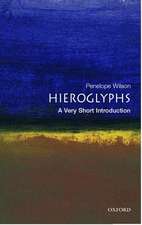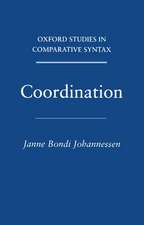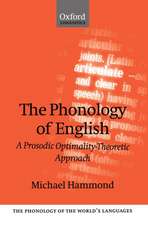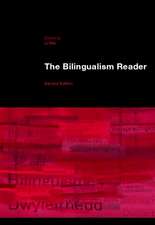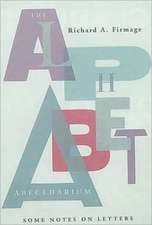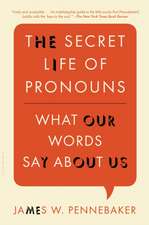Sylvia Plath and the Language of Affective States: Written Discourse and the Experience of Depression: Advances in Stylistics
Autor Dr Zsófia Demjénen Limba Engleză Paperback – 22 feb 2017
| Toate formatele și edițiile | Preț | Express |
|---|---|---|
| Paperback (1) | 217.82 lei 6-8 săpt. | |
| Bloomsbury Publishing – 22 feb 2017 | 217.82 lei 6-8 săpt. | |
| Hardback (1) | 773.88 lei 6-8 săpt. | |
| Bloomsbury Publishing – 26 aug 2015 | 773.88 lei 6-8 săpt. |
Din seria Advances in Stylistics
- 14%
 Preț: 569.53 lei
Preț: 569.53 lei - 18%
 Preț: 180.88 lei
Preț: 180.88 lei - 13%
 Preț: 239.14 lei
Preț: 239.14 lei -
 Preț: 257.03 lei
Preț: 257.03 lei - 13%
 Preț: 257.12 lei
Preț: 257.12 lei -
 Preț: 237.20 lei
Preț: 237.20 lei - 13%
 Preț: 239.21 lei
Preț: 239.21 lei -
 Preț: 257.68 lei
Preț: 257.68 lei -
 Preț: 257.97 lei
Preț: 257.97 lei - 13%
 Preț: 257.68 lei
Preț: 257.68 lei - 13%
 Preț: 256.59 lei
Preț: 256.59 lei -
 Preț: 254.75 lei
Preț: 254.75 lei -
 Preț: 224.11 lei
Preț: 224.11 lei - 13%
 Preț: 257.97 lei
Preț: 257.97 lei - 13%
 Preț: 256.85 lei
Preț: 256.85 lei - 23%
 Preț: 200.71 lei
Preț: 200.71 lei - 22%
 Preț: 223.67 lei
Preț: 223.67 lei - 23%
 Preț: 229.86 lei
Preț: 229.86 lei - 21%
 Preț: 218.18 lei
Preț: 218.18 lei - 23%
 Preț: 199.45 lei
Preț: 199.45 lei -
 Preț: 198.12 lei
Preț: 198.12 lei - 23%
 Preț: 192.19 lei
Preț: 192.19 lei -
 Preț: 254.84 lei
Preț: 254.84 lei
Preț: 217.82 lei
Preț vechi: 244.84 lei
-11% Nou
Puncte Express: 327
Preț estimativ în valută:
41.69€ • 43.36$ • 34.41£
41.69€ • 43.36$ • 34.41£
Carte tipărită la comandă
Livrare economică 14-28 aprilie
Preluare comenzi: 021 569.72.76
Specificații
ISBN-13: 9781350024250
ISBN-10: 1350024252
Pagini: 256
Dimensiuni: 156 x 234 x 19 mm
Greutate: 0.35 kg
Ediția:NIPPOD
Editura: Bloomsbury Publishing
Colecția Bloomsbury Academic
Seria Advances in Stylistics
Locul publicării:London, United Kingdom
ISBN-10: 1350024252
Pagini: 256
Dimensiuni: 156 x 234 x 19 mm
Greutate: 0.35 kg
Ediția:NIPPOD
Editura: Bloomsbury Publishing
Colecția Bloomsbury Academic
Seria Advances in Stylistics
Locul publicării:London, United Kingdom
Caracteristici
Asks and answers the question, 'How does the language of written texts of a personal nature convey the writer's mental states?'
Notă biografică
Zsófia Demjén is Lecturer of English Language and Applied Linguistics at The Open University, UK.
Cuprins
List of AbbreviationsList of ConcordancesList of Figures and TablesAcknowledgements1. Introduction Part I - Background to the Study 2. Sylvia Plath and her Journals 3. Language and Affective States - Setting the Theoretical Scene 4. Linguistic Characteristics of the Smith Journal - Corpus Analysis I Part II - Zooming In: Investigating Key Linguistic Features 5. Self-description and Direct References to Affective States 6. Affective States and Metaphor 7. You and Plath 8. Investigating Second-person Entries Further - Corpus Analysis II 9. So What? References Index
Recenzii
An excellent example of the benefits that can be reaped by [broadening the boundaries of stylistic approaches] ... By combining qualitative and quantitative methods with narrative, cognitive and psychological insights, Demjén is particularly well equipped to draw conclusions with regard to the linguistic projection of Plath's renowned depressive bouts. ... She impressively combines all these interests and insightfully highlights possible applications of stylistics work for the understanding of depression in general.
Demjén's analyses combine qualitative insights with quantitative corpus findings, adopting a range of approaches and analytical techniques, from SFL to metaphor theory ... Those who are curious about the mechanics of Plath's style, and not just about her experience of depression, will find a fascinating dissection of the out-of-hours workings of Plath's genius.
An important contribution to the widening field of stylistics and will be of interest to anyone wanting to understand the relationship between language and emotion, and what is actually being articulated about an individual's state of mind through their linguistic choices.
Zsófia Demjén has written a meticulous and illuminating interdisciplinary study of Sylvia Plath's journals. She makes a strong case for their capacity to provide real insight into the writer's experiences of mental illness. I was particularly struck by Demjén's emphasis on the usefulness of these journal entries to others, as articulations of suffering that we often cannot voice ourselves. Though academically rigorous and methodical, the book also makes for fascinating and highly compelling reading. Whilst rightly careful to discourage a reading of Plath's entire published creative output through a simplistic biographical lens, Demjén's evaluation of these journals validates our instinct to regard Plath's depression as relevant to an understanding of the writer and her work.
This book is a major incursion of a linguist into the realms of clinical psychology and psychopathology and one which I welcome. It lays down very well the variety of tools discourse analysis offers in helping understand the experiences which have hitherto been the domain of mental health care professionals.
This is a rich, timely and fascinating book. Zsófia Demjén deftly and intricately combines methodological and analytical approaches in order to examine, with true rigour and insight, the language of one of the 20th Century's most powerfully and disturbingly eloquent stylists. Focusing on Plath's intimate and affecting 'Smith Journal', Demjén systematically explores the interface between emotional turmoil and its textual encoding, revealing how this alluringly manneristic writer harnesses the resources of language in order to articulate profound psychological distress. Sylvia Plath and the Language of Affective States will be of interest to students and scholars of literature and language, not to mention the more general reader piqued by all things Plath.
Demjén's analyses combine qualitative insights with quantitative corpus findings, adopting a range of approaches and analytical techniques, from SFL to metaphor theory ... Those who are curious about the mechanics of Plath's style, and not just about her experience of depression, will find a fascinating dissection of the out-of-hours workings of Plath's genius.
An important contribution to the widening field of stylistics and will be of interest to anyone wanting to understand the relationship between language and emotion, and what is actually being articulated about an individual's state of mind through their linguistic choices.
Zsófia Demjén has written a meticulous and illuminating interdisciplinary study of Sylvia Plath's journals. She makes a strong case for their capacity to provide real insight into the writer's experiences of mental illness. I was particularly struck by Demjén's emphasis on the usefulness of these journal entries to others, as articulations of suffering that we often cannot voice ourselves. Though academically rigorous and methodical, the book also makes for fascinating and highly compelling reading. Whilst rightly careful to discourage a reading of Plath's entire published creative output through a simplistic biographical lens, Demjén's evaluation of these journals validates our instinct to regard Plath's depression as relevant to an understanding of the writer and her work.
This book is a major incursion of a linguist into the realms of clinical psychology and psychopathology and one which I welcome. It lays down very well the variety of tools discourse analysis offers in helping understand the experiences which have hitherto been the domain of mental health care professionals.
This is a rich, timely and fascinating book. Zsófia Demjén deftly and intricately combines methodological and analytical approaches in order to examine, with true rigour and insight, the language of one of the 20th Century's most powerfully and disturbingly eloquent stylists. Focusing on Plath's intimate and affecting 'Smith Journal', Demjén systematically explores the interface between emotional turmoil and its textual encoding, revealing how this alluringly manneristic writer harnesses the resources of language in order to articulate profound psychological distress. Sylvia Plath and the Language of Affective States will be of interest to students and scholars of literature and language, not to mention the more general reader piqued by all things Plath.

